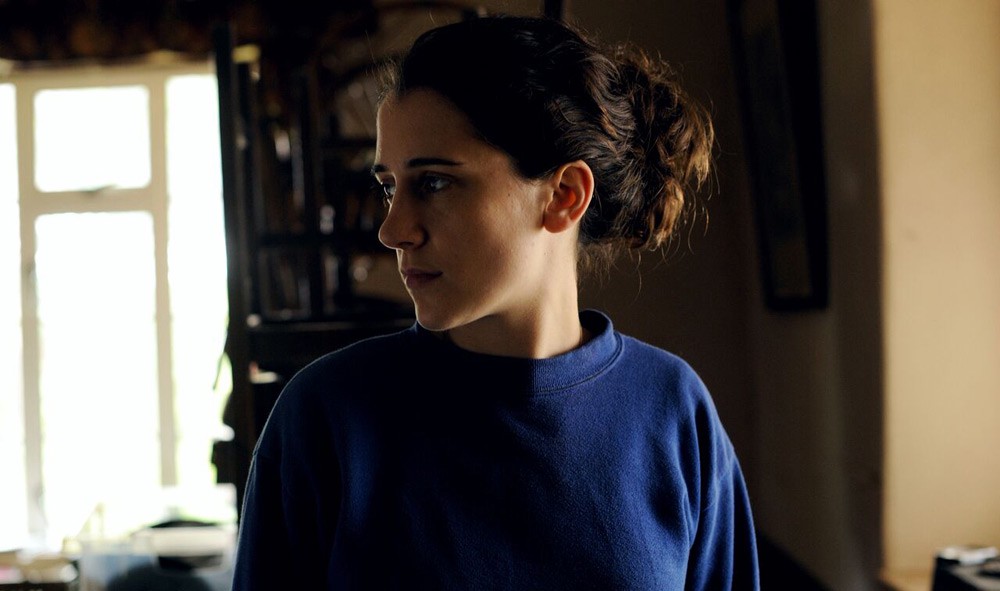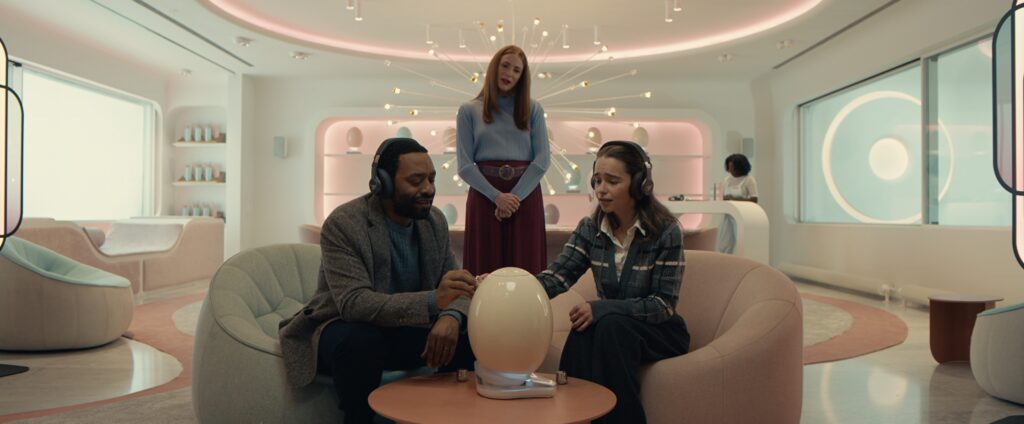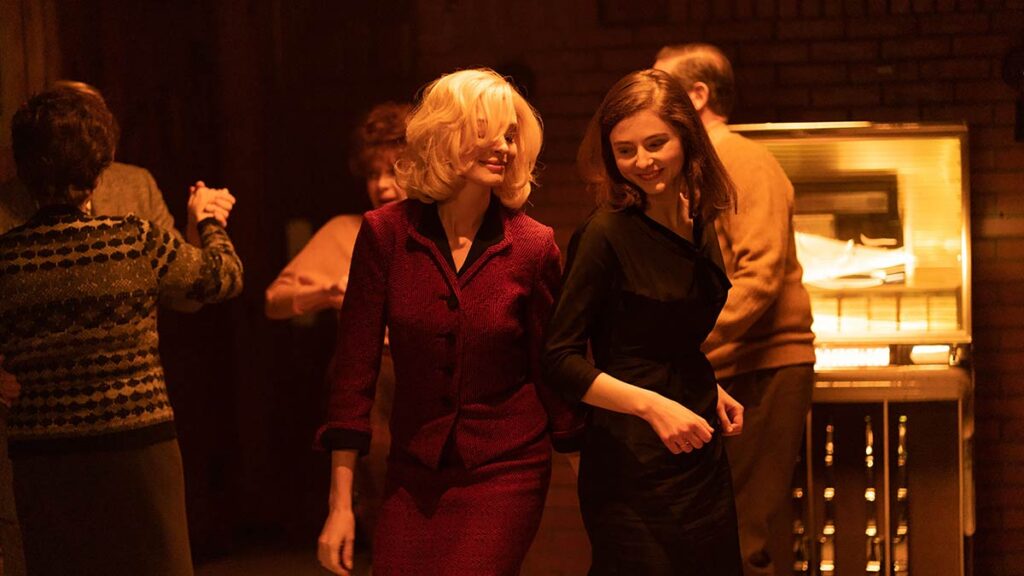Born in Hong Kong and educated in the UK, Hope Dickson Leach completed her MFA in filmmaking at Columbia University in New York. Her award-winning thesis film, “The Dawn Chorus,” played at festivals worldwide. Screen International made her a Star of Tomorrow and Filmmaker Magazine named her one of the “25 New Faces of Independent Film.” She is currently developing several other features and is a co-founder of Raising Films, a campaign to make the film industry more parent-friendly.
“The Levelling” will premiere at the 2016 Toronto International Film Festival on September 9.
W&H: Describe the film for us in your own words.
HDL: “The Levelling” is a story built around the possibility of redemption in a crisis. It’s the story about a woman from a broken family returning home under the worst circumstances — the sudden death of her brother.
She wants to uncover what has happened and what her role might be in this tragedy. Ultimately, it’s a story of reconciliation and survival.
W&H: What drew you to this story?
HDL: It seems to me that there’s always a period of opportunity after awful things happen when you can effect change. It takes enormous courage, and great strength, but it can happen. I wanted to explore that experience.
For Clover, the heroine, she returns home believing that her father is to blame for her brother’s death, but she makes discoveries about her father, her brother, and then herself that overturn her convictions not just about the accident, but about who she is. This turns what was already a difficult time into one of real crisis. This is the psychological space of the film, and one she must drag herself out of.
Taking this internal family story and setting it in the flood-ravaged community of England’s Somerset Levels was an opportunity to make the story work on several levels and create something I hope is truly cinematic. Where this community had to come together during the floods to fight for change to happen in how the land was managed I saw a real fight for survival: something that in the developed world we can lose sight of. And yet the story feels more urgent than ever, as our planet is changing. Our relationship with the land is ever more relevant.
W&H: What do you want people to think about when they are leaving the theatre?
HDL: I want them to feel hopeful for the future of my characters, while at the same time understanding the deep loss they have suffered. I hope the film creates a deep emotional response in the audience that will encourage them to consider their own survival, and their lives, and how each serves the other.
It would be nice if people called their parents, too. That’s always a good thing to do.
W&H: What was the biggest challenge in making the film?
HDL: It was all a challenge. Every day, every decision, every step. I’ve been trying to make a feature for a long time, so the act of making a film felt weighed down with that baggage. I would wake every day thinking, “Don’t blow this! Enjoy it! Get it right!” which is a pretty exhausting way to work.
The commission was a lot of hard work, but then making the film—stepping up to the challenge of leading such a great cast and crew—was scary, I have to be honest. I suspect my challenges, however, were nothing compared to the crew who had to deal with being ankle deep in cow shit every day. I wasn’t wrangling any cables and for that I am truly thankful.
Ultimately, I loved making this film. I felt lucky and blessed, and the weather behaved, and the animals weren’t too awful, and I met wonderful people and learned so much.
W&H: How did you get your film funded? Share some insights into how you got the film made.
HDL: The film was funded by the BFI, Creative England and BBC Films under their low budget initiative iFeatures. From the 400 odd applications they receive, three films are commissioned after months of workshops and several stages of development with the numbers dwindling each time. It was sort of like a reality TV show but without the cameras.
Making a first feature is so incredibly difficult that schemes like these are really competitive, which makes you up your game not only creatively but in terms of understanding what the market is and what sort of film you are making.
Even though the budgets are low you are guaranteed a BBC (TV) broadcast, and this is the third incarnation of the scheme, so it is well recognized within the UK industry. This means, despite the size of the film, we can attract collaborators and cast who might not normally work at that budget level.
What was incredibly liberating about this model was that, although the development process was accelerated and intense, at the end there was a possibility of a commission — i.e. the entire budget was there for the taking. We weren’t going to have to piece the financing together. From application, which was a 10 page outline, to shoot [was about] 18 months, I think? An incredibly short time, really, for a film that was fully financed by those organizations.
During the development process we started interviewing collaborators, and identifying cast and locations so that as soon as we got the green light we were literally ready to press go.
W&H: What does it mean for you to have your film play at TIFF?
HDL: TIFF is obviously a huge festival, one of the best, whose lineup is always incredible. To be selected and recognized by that festival is really validating — we’ve made a real film!
We will obviously be one of the smaller films there, and so the challenge is to make sure we find the audience for the film that we know is there. We’re working with an incredible sales agent, Charlotte Mickie, who I know will really champion the film and that is a real relief. As a first timer to this enormous festival it feels wonderful to be in such safe hands.
W&H: What’s the best and worst advice you’ve received?
HDL: I’m lucky to have had lots of good advice over the years this journey to my first feature has taken me. Before I shot my first short film my friend DeMane Davis (“Lift,” “Black White and Red All Over”) gave me a list of the ten shooting commandments. They included: “Every day is a new day” and “Don’t hide from the actors: They’re as scared as you are.” A teacher of mine at film school, Eric Mendelsohn (“Judy Berlin,” “Three Backyards”) once played us a piece of music in class and asked if film could be as complex as that, which blew my mind.
I think most people give advice with the best intentions, but the biggest lesson I’ve learned is they give the advice they wish someone had given them. It’s only bad when I think it’s something I should trust and believe, rather than actually figuring out if it’s the best for me.
For example, on this film I was reassured that remote editing was fine and common and great. And I’m sure it works brilliantly for lots of people, but in fact it did not work for me at all, and we had to reimagine our whole post-production plan when I realized this.
So I suppose I think advice is only as good as it is suitable — and you can’t really know whether it’s good advice until you’ve actually tried it out for yourself.
W&H: What advice do you have for other female directors?
HDL: With the above caveat in mind, find ways to make work, find collaborators who have the same vision as you, and make sure you have what you need to do your best work — just ask for it. You have every right to do that.
One of the largest challenges I struggled with in making this film was having two small children and juggling not only childcare but the emotional fallout of having to commit myself brain, heart, and soul, to something else. I wasn’t ready for this, and I didn’t feel empowered to ask for the things I needed. I won’t do that again. I want to make films for the rest of my life and I also plan to be a parent for that long, so I need to make sure both parts of my life are attended to as required.
W&H: Name your favorite woman-directed film and why.
HDL: “An Angel at my Table” by Jane Campion is not just my favorite woman-directed film, but one of my favorite films, full stop. The structure is so brave, the central performance by Kerry Fox extraordinary, and it achieves something so complex and true without reliance on an over-used narrative arc. It’s a masterpiece.
I’m also a huge fan of Kelly Reichardt’s work, and “Old Joy” and “Wendy and Lucy” are both big influences on this film.
W&H: Have you seen opportunities for women filmmakers increase over the last year due to the increased attention paid to the issue? If someone asked you what you thought needed to be done to get women more opportunities to direct, what would be your answer?
HDL: The recent attention has been fantastic, but sustained commitment is the only thing that will change things for the long term. Certainly, I’ve been aware of lots of television shows in the UK, for example, setting out to employ more female directors. However, despite these intentions, I’ve heard just as many stories of them ending up hiring men, often citing “well we’ve looked at lots of women and they weren’t right.”
These intentions aren’t going to change anything unless people actually make commitments, like Ava DuVernay did with “Queen Sugar.” I’d also like to see more men committing to hire women in all positions and not just leaving it to the women, as otherwise we end up in danger of shows made entirely by women, and shows made entirely by men. As much as I love working with women, there are some great men out there who I love working with, and I don’t see why women have to do all the heavy lifting to achieve inclusivity at the level we’re talking about.
I don’t think there is one thing that can be done to increase the numbers of women directors, but every single one of the things that people say need to be done should be adopted. It’s going to be gradual. Given my own experience, I’d like to see more older women being embraced in the industry, and more conversations around what parent filmmakers need in place to make their work.
Until men and women are equal caregivers in society’s eyes, women’s careers suffer disproportionately due to parenthood, and we need to acknowledge that and respond appropriately. Artists shape society and if we want society to change, we need to support artists who are struggling with the system — meaning addressing inclusivity across the board — gender, race, and class — with a truly intersectional approach.







